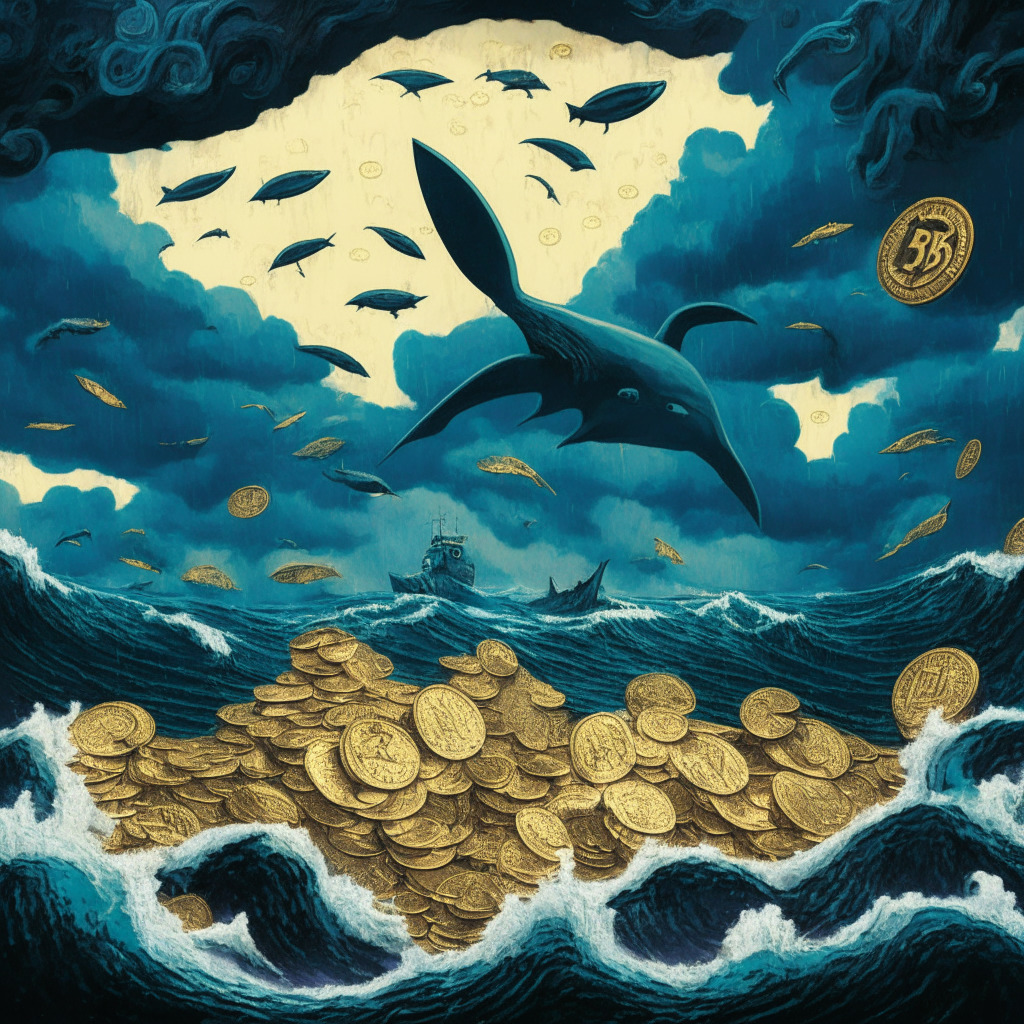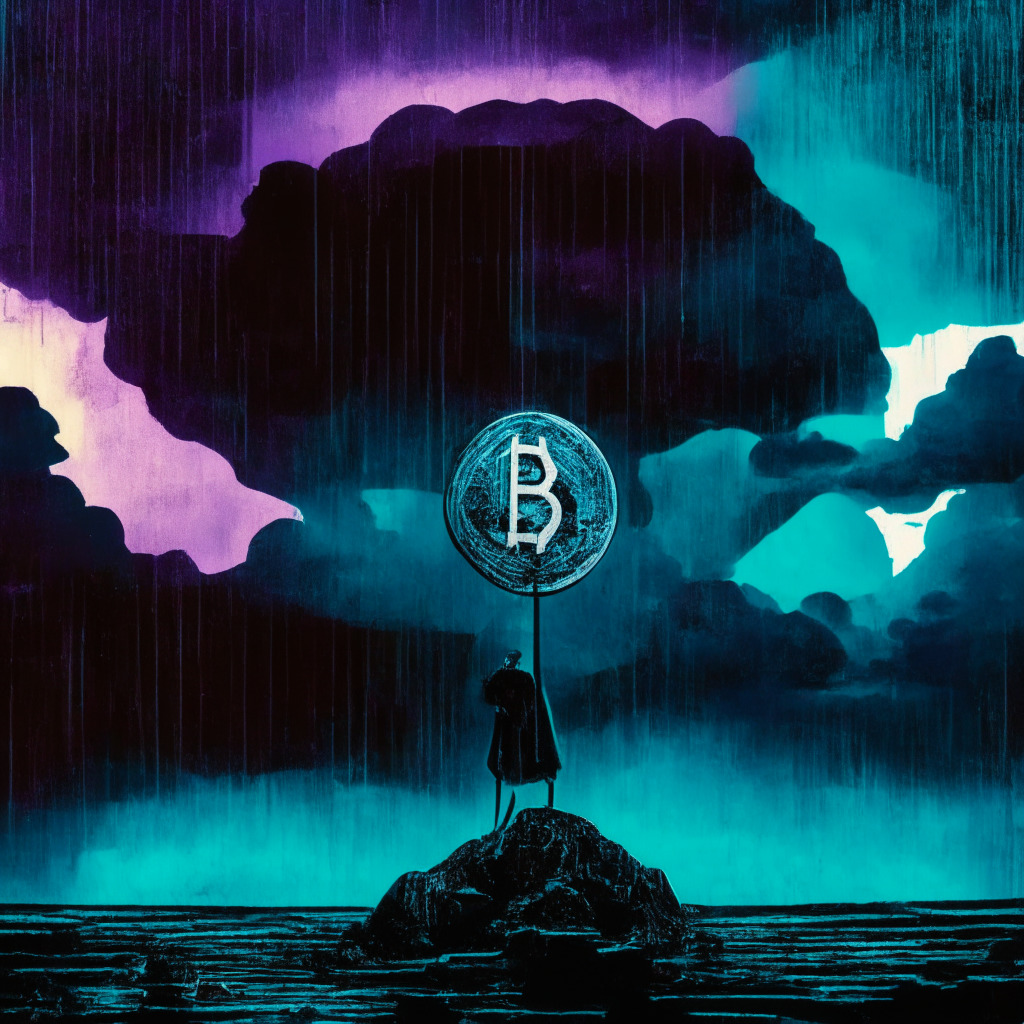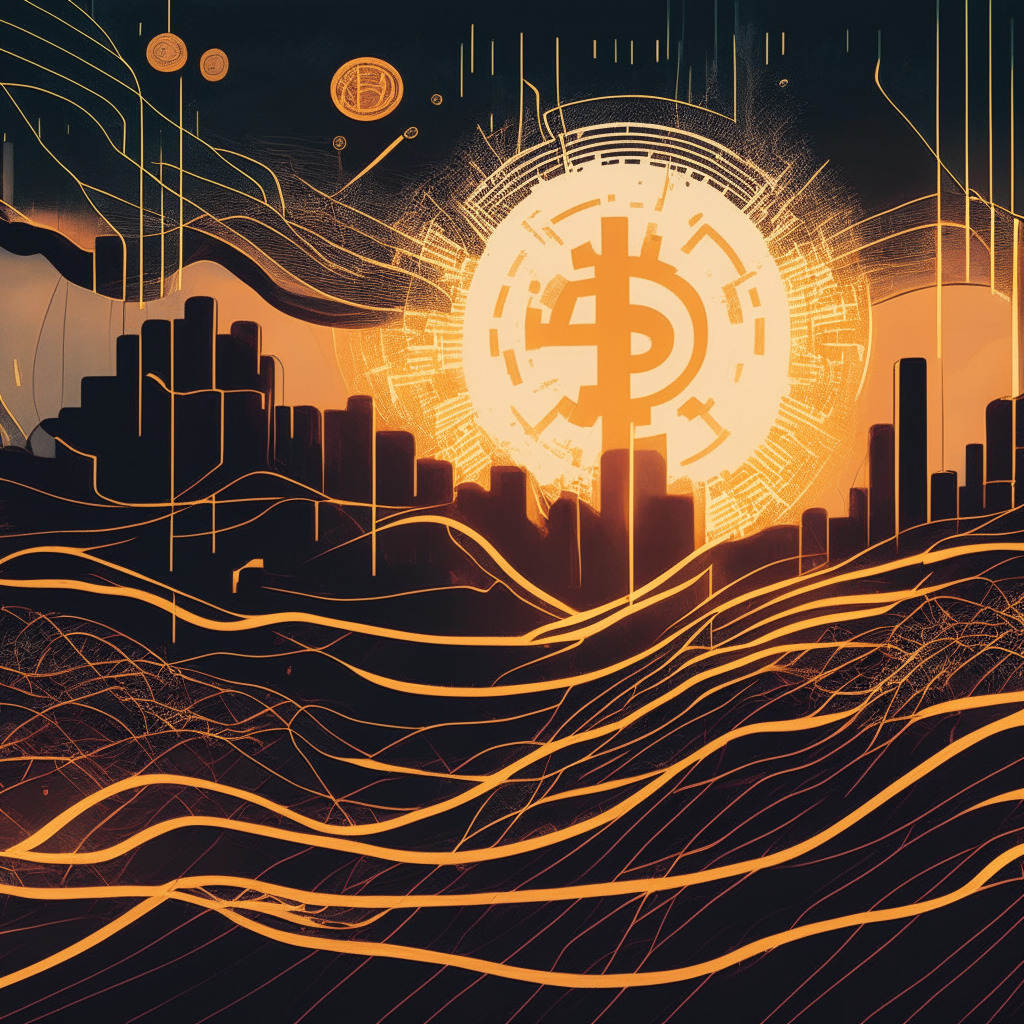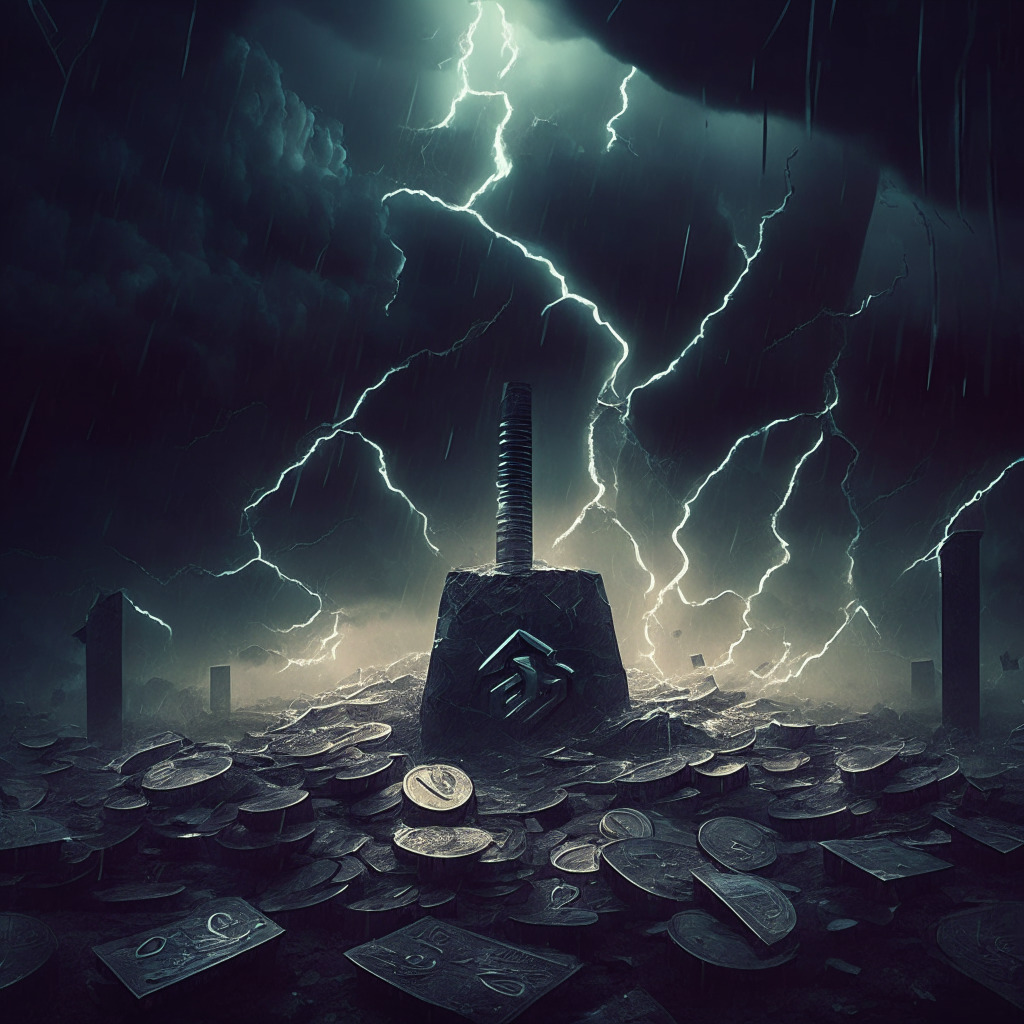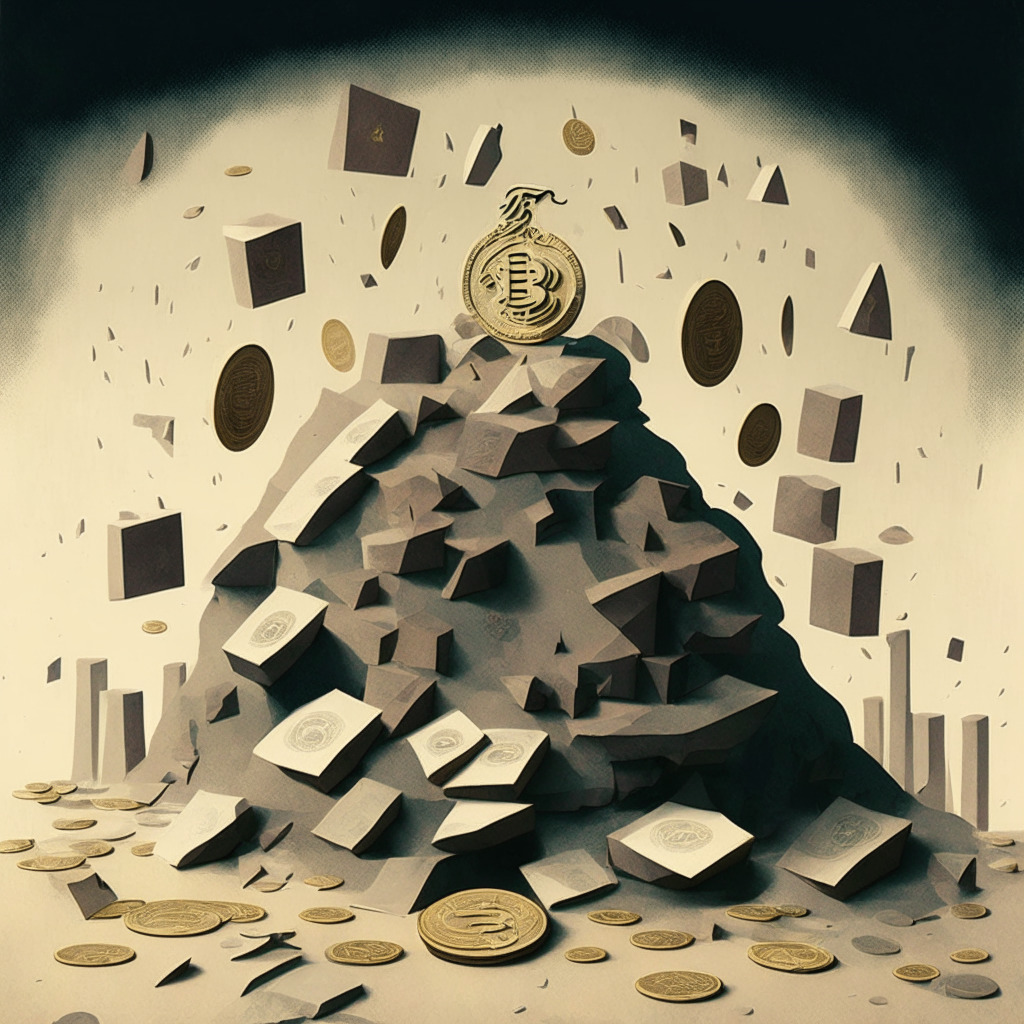“Ardana Labs promised an innovative stablecoin platform for Cardano, however, the project collapsed due to alleged poor financial management. Xerberus’ analysis suggests Ardana’s executives may have misused project funds, leading to a $4 million loss, emphasizing the inherent risks in new-age Web3 startups.”
Search Results for: USDC
Stablecoins: Revolution in Progress or Ticking Time Bomb? Unraveling the Crypto Quandary
“In the world of digital assets, the role and impact of stablecoins is increasingly complex. Despite declining holdings in exchanges and concerns about their potential financial instability, Tether-based stablecoin loans have increased in 2023. The place of stablecoins in crypto markets presents an intricate web of contradictions and uncertainties.”
Navigating Regulatory Tensions: SEC’s Scrutinized Actions Against Binance and the Crypto Future
The SEC’s attempt to enforce stricter regulations around operations of major cryptocurrency exchanges, including accusations against Binance, has sparked debate. Questions are being raised about SEC’s use of lawsuits to change regulations, and its consistent use of the Howey Test for identifying securities. Not all digital assets, including certain stablecoins, believe they should be classified as securities. This situation challenges the crypto community to contemplate the impact of such regulatory actions on the future of cryptocurrency.
Bitcoin Bounce at $27,000: Market Trends, Trader Wariness and a Legal Tangle with the SEC
“BTC’s volatility has resulted in a ‘short squeeze’, struggling to consolidate gains at around $27,000. Market activity has been largely driven by ‘perpetual’ traders, with $27,200 remaining a volatile point. Legal issues, such as Binance’s SEC lawsuit, also impact the digital currency landscape.”
Stablecoins on Trial: Binance, Circle, and the Global Regulatory Showdown
The SEC has sued Binance for legal violations involving crypto tokens BNB and BUSD, and Circle argues that these stablecoins aren’t securities as their acquisition doesn’t foresee profit-making. Meanwhile, Gemini is closing its Netherlands operations for failing to meet regulatory requirements, highlighting growing tensions between crypto platforms and financial regulatory bodies.
Unraveling the Crypto Carousel: SEC vs Binance, and the Circle Defence
The blog post discusses the legal fight between the SEC and cryptocurrency exchange Binance over the classification of digital assets as securities. It also touches on Circle’s argument that stablecoins linked to the U.S. dollar, such as BUSD and USDC, shouldn’t be categorised as securities. The outcome of the legal battle could greatly impact the future of cryptocurrency regulations.
Navigating Complex Debt: Founder of DeFi Protocol Curve’s Multi-Million Dollar Maneuver
Michael Egorov, founder of DeFi protocol Curve, employed a strategy to settle his extensive obligations on Aave. He deposited millions of CRV as collateral on a lending platform, and borrowed Curve’s crvUSD stablecoin, which he exchanged for USDT to clear his Aave debt. Despite significant outstanding debt across several DeFi platforms, Egorov has been proactive in lessening his debt and usage rate.
Unraveling Stablecoins: Booming Assets or Impending Crisis?
“This report by the United States Federal Reserve Banks reveals the potential impact of stablecoins on the economy. Highlighting the similarity between stablecoins and money market funds, it warns of the vulnerabilities these coins face during market downturns. Issues like risky backing collateral and erosion of investor confidence can lead to substantial losses.”
Expanding the Stablecoin Universe: Circle’s EURC Now on Stellar Network
Stablecoin issuer Circle has introduced a new version of its euro-backed stablecoin, EURC, now available on the Stellar network. This innovation offers users the ability to handle business via blockchain networks in local currencies. However, converting blockchain transactions into local currencies remains complicated, highlighting the integration challenges that the blockchain community faces.
Federal Reserve Concerns: Stablecoins’ Instability or the Next Financial Evolution?
“Federal Reserve Banks express concern that stablecoins could introduce instability into the financial system due to lack of standard regulatory framework. The Central Bank of Italy reinforces stablecoins’ unstability and presses for international regulatory body to govern cryptocurrencies. Despite risks, blockchain-based cross-border payments show promise of cost-effective solutions.”
Pushing Boundaries: Binance’s Plan for Stablecoins Expansion in Japan
“Binance plans to launch stablecoins pegged to the dollar, euro, and yen in partnership with Mitsubishi UFJ Financial Group in Japan. Leveraging MUFG’s blockchain platform, this initiative aims to launch in 2022, expanding existing crypto trading and payment services. Future offerings could also be introduced subject to regulatory approvals.”
Declining Dominance of Stablecoins: A Shift Towards Traditional Assets or a Chance for Recovery?
Despite a difficult year, the focus stays on the declining stablecoin sector, with major stablecoins like USDT showing consistent growth amidst the downturn. Factors such as legal action against major crypto exchanges and swings in stablecoin trading volumes due to the rush to list Bitcoin ETFs have impacted this fall. However, PayPal’s recent introduction of PYUSD could revive confidence in the sector. The future of stablecoins, while currently unstable, is still pivotal to the crypto landscape.
The Dwindling Dominance of Stablecoins: A Market Shift Towards Traditional Assets
Stablecoin market dominance has declined to 11.6%, despite a 10.9% rise in trading volume for such currencies. Despite challenges faced by cryptocurrencies, the launch of PayPal’s stablecoin PYUSD might revive investor faith in stablecoins, and encourage broader crypto adoption.
Tether’s Loan Strategy: Growth by Risk or Recipe for Disaster?
Tether, the company behind the popular USDT stablecoin, reportedly lends out stablecoins at a high level, with loans amounting to $5.5 billion as of end-June 2021. However, concerns arise given the lack of clear transparency about the firm’s liquidity, capital reserves, and loan specifics. Reassurance comes from Tether’s claim that its tokens are fully supported by cash or liquid assets.
Dwindling Stablecoin Dominance: A Strategic Investor Shift or a Market Trend?
“Stablecoins have experienced a 17-month decline, losing market dominance by 11.6%, with a total sector drop of $124 billion. Despite this, stablecoin trading volume has grown by 10.9%. Some propose investors are cashing out stablecoins to diversify into traditional assets due to rising yields in fixed-income securities and cryptocurrencies. This pivot raises questions about the future behavior of the crypto market.”
Navigating the Storm: EU’s MiCA and the Future of Stablecoins in Europe
“The European Union’s upcoming Markets in Crypto Assets (MiCA) regulation has raised concerns about the potential delisting of all stablecoins in Europe by June 30. MiCA aims to streamline processes and enhance oversight. However, its provisions concerning stablecoins are causing apprehension, especially as they seem to contradict the aspirations of many issuers for decentralization.”
XRP’s Resurgence and the Rising Star of Wall Street Memes (WSM) in Cryptocurrency Landscape
XRP has secured its position as the fifth-largest cryptocurrency in terms of market cap, surpassing USDC. Despite slight volatility, XRP appears poised for future growth, with recent developments suggesting a potential surge. Ripple’s alliances with other entities further enhance this positive outlook.
PayPal’s Entry into Stablecoin Could Disrupt Financial Markets: Quigley’s Forecast & Scrutiny
Tether co-founder William Quigley has noted that PayPal’s venture into stablecoin could revolutionize multicurrency transactions by reducing costs. However, whether PayPal will transfer these savings to end users or retain them as profit is yet to be seen.
Billionaire Mark Cuban’s Cryptocurrency Heist: A hard Lesson on Crypto Safety
Billionaire investor Mark Cuban recently lost nearly $900,000 in crypto from his hot wallet in a swift heist. The security breach highlights the inherent risks of dealing with cryptocurrencies, stressing the need for robust anti-money laundering, fraud detection, and regulatory measures. Even seasoned investors like Cuban are reminded to maintain vigilance and ensure precautions when interacting with these digital assets.
Ripple’s Liquidity Hub Expansion: Impact on XRP Demand and Diversification Into BTCBSC
“Ripple Labs plans to extend its Liquidity Hub platform to Australia and Brazil. The Hub serves as Ripple’s digital asset liquidity management service, currently supporting BTC, ETH, LTC, ETC, BCH, USDT and USDC, but not XRP. This hints at wider XRP adoption globally and is seen as a positive indicator, despite ongoing litigation with the SEC.”
Cryptocurrency Heist: A Wake-Up Call on the Need for Elevated Security Measures in the Blockchain Landscape
A suspicious withdrawal of around $2.7 million worth of cryptocurrencies from Remitano crypto exchange brought to light potential security breaches. The immediate response included Tether halting the movement of drained coins, saving a significant portion of the stolen funds. However, the security issue emphasizes the importance of vigilant security measures in the crypto landscape.
Breach in Remitano: Navigating the Tightrope between Blockchain’s Security and Decentralization
“Cryptocurrency exchange Remitano fell victim to a hack, with $2.7 million withdrawn suspiciously. This incident raises questions over blockchain’s security. The unauthorized withdrawal included Tether, USD Coin, and Ankr tokens. Despite Tether freezing the suspected address, concerns persist about potential misuse of centralized control against crypto’s decentralization principle.”
Unfolding Grab’s Web3 Wallet Experiment: Boon or Bane for Southeast Asia’s Crypto Future?
“Southeast Asian tech giant, Grab collaborates with stablecoin operator Circle to test a Web3 wallet in their superapp, offering non-fungible token (NFT) vouchers to users. They aim to mainstream blockchain tech and integrate stablecoins into daily transactions. However, issues around data privacy and security underscore the need for clear regulation in this largely uncharted territory.”
Navigating the Web3 Revolution: Grab and Circle’s Leap of Faith Amidst Regulatory Uncertainty
“Grab, Southeast Asia’s largest tech startup, has partnered with Circle to bring Web3 services to Singapore through ‘Grab Web3 Wallet’, encouraging the adoption of stablecoins, digital assets, and smart contracts. However, this move comes amidst a market environment filled with regulatory uncertainty, particularly concerning digital currencies, causing us to question whether these technologies will be allowed to flourish or be stifled by regulation.”
Ground-breaking Partnership: Circle and Grab Aim to Introduce Web3 Wallet in Singapore
Circle Internet Financial, the company behind the USDC stablecoin, is partnering with global ride-hailing platform Grab to introduce a Web3 blockchain-based wallet in Singapore. The “Grab Web3 Wallet” will enable users to earn rewards and collect non-fungible token (NFT) vouchers, integrating digital assets into Grab’s existing services.
Blending Traditional Finance with DeFi: MetaComp’s Bold Game-Changer in Singapore’s Financial Scene
“MetaComp, Singapore’s digital asset platform, combines traditional finance with decentralized finance, allowing customers to purchase traditional securities with stablecoins. Despite some skepticism due to crypto volatility, the firm believes that fiat-pegged cryptocurrencies will penetrate the real economy.”
Unraveling the Regulatory and Ethical Quagmires: Navigating through the Crypto Landscape
A U.S. federal judge delayed a sentencing hearing for radio host Ian Freeman, who allegedly created an illegal Bitcoin exchange used by scammers. Meanwhile, the DeFi Education Fund contests a patent claim by tech company True Return Systems. Also, DigiFT’s dETH0924 provides up to 4% APR, boosting Ethereum’s PoS mechanism, while crypto infrastructure provider Qredo integrated Circle’s USDC stablecoin into its wallet.
PayPal’s PYUSD Stablecoin: Shining Beacon or Misstep in Crypto Space?
“PayPal’s proprietary stablecoin, PYUSD, is criticized due to concerns over centralization and potential vulnerability flaws. Its code could pose adoption hindrances and potentially wipe out balances. The crypto community sees PYUSD as a setback, contrasting the ethos of cryptocurrency.”
PayPal Broadens Crypto Horizons: USD Conversion Service Unveiled. Strides or Stumbles?
“PayPal has introduced a service allowing users to convert their digital currencies into US dollars. This ‘off-ramp service’ enables cryptocurrency wallet users to transition into USD for various uses. The service extends to decentralized applications and non-fungible token marketplaces. The collaboration with MetaMask plays an important role in this expansion.”
Fear, Uncertainty, Doubt: Unexpected Catalysts for Crypto Price Rallies?
“Digital assets show potential for price rallies amid market uncertainty, reports cryptocurrency analytics firm Santiment. Increased Fear, Uncertainty, and Doubt (FUD) sentiments often lead to price boosts within cryptocurrencies. This trend witnessed Ethereum’s price rise 48% following a FUD incident.”
Redefining Value: The Digital Frontier of Tokenized Real-World Assets
“Tokenized real-world assets are becoming mainstream with firms like Coinbase, Circle, and Aave forming the Tokenized Asset Coalition to promote the transition to decentralized finance. Predictions estimate tokenized assets reaching $16 trillion by 2030. Meanwhile, key financial entities globally are considering or offering crypto-related services, signifying a pivotal switch in financial systems.”
Diverging Paths: Solana’s Struggle Amid Market Bullishness VS Bitcoin BSC’s Rising Star
Despite Visa’s USDC Stablecoin Settlement expansion to Solana (SOL), the cryptocurrency encountered a descent of 23.4% over 23 days. However, Bitcoin BSC, an off-shoot project, is drawing attention with promises of swift transaction times, minimal fees, and an eco-friendly approach to energy concerns. Combining these advancements, Bitcoin BSC emerges as a potentially promising investment option in the crypto market.

